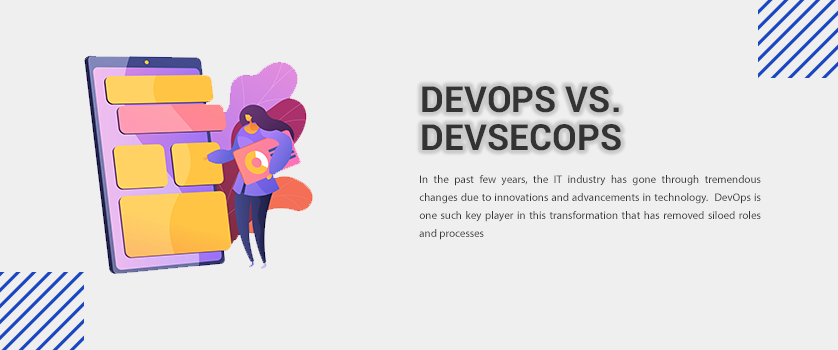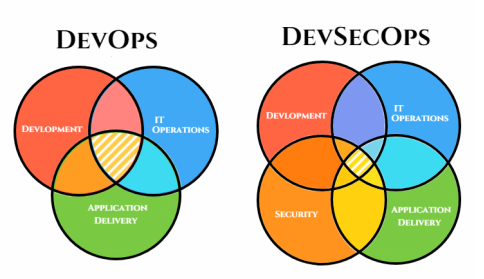


In the past few years, the IT industry has gone through tremendous changes due to innovations and advancements in technology. DevOps is one such key player in this transformation that has removed siloed roles and processes, establishing closer collaboration between developers and system administrators in the software development process, promoting automation and continuous delivery, among other beneficial practices.
However, the ever-increasing demand for quality and secure applications propelled further development in DevOps, which resulted in the introduction of DevSecOps.
To answer this question, we are here with a detailed comparison of DevOps and DevSecOps.

A technology that led to drastic changes in the software development landscape, DevOps aims to make software releases faster and frequent through continuous integration, continuous development, continuous testing, automation, continuous deployment, and more.
Introduced in 2009 to overcome various challenges of agile development and remove the barriers between developers and system administrators, DevOps has since evolved into a more concrete and beneficial practice that has gained tremendous popularity among industries worldwide.
DevOps is an amalgamation of Dev and Ops that automates every stage of the software development lifecycle, improving efficiency by eliminating the boundaries between the two phases of software development and optimizing time and resources for enhanced productivity, understanding, and training. Moreover, DevOps implementation throughout the development pipeline offers developers control over the product infrastructure, which helps prioritize software performance over any other purpose.
DevOps lifecycle consists of six important phases, planning, build, continuous integration and deployment (CI/CD), monitoring, operate, and feedback, wherein the teams collaborate and communicate to maintain alignment, velocity, and software quality.
For a comprehensive understanding of DevOps, check out the complete guide here.
Some of the main elements that form DevOps are:
Now that we have an understanding of DevOps, let us move on to unraveling the concepts of DevSecOps.
DevSecOps came into being to overcome the security challenges in DevOps and became another major cultural shift in the field of software development. DevSecOps is a methodology that fuses DevOps with extensive security to support the accelerated development of a stable codebase. Today, organizations worldwide are rapidly switching to DevSecOps for software and application development, considering the higher level of proficiency it offers in security.
Similar to DevOps, DevSecOps relies on automation to automate every aspect of the development pipeline, including security audits. From testing for potential security exploits to building business-driven security services using prominent tools, DevSecOps ensures security is built into applications rather than being integrated haphazardly afterward.
From the pre-commit stage to build, testing, and deployment, the process involves multiple checks with the help of various automated tools for complete security validation.
Initially, DevSecOps was focused primarily on automating the code security and testing. However, now it also encompasses more operations-centric controls and enables organizations to run their operations on various Cloud platforms like AWS, Azure, and Google Cloud for rapid delivery and enhanced security.
Other advantages offered by DevSecOps includes:
Some of the key elements that characterize DevSecOps are:
DevOps and DevSecOps are similar concepts that together help improve collaboration and communication within organizations and teams and allow organizations to build a quality and secure product. So, let us some up the major concepts of DevOps and DevSecOps, with the following side-by-side comparison:
|
DevOps |
DevSecOps |
|---|---|
|
|
Since consumer and market demands are changing constantly, the evolution of technology will continue to remain never-ending. In the past few years, DevOps have become an integral part of technology-driven and successful organizations. However, the coming years will witness a monumental shift towards DevSecOps, the technology has already become a growing movement.
In short, the scope and future of DevOps and DevSecOps will continue to evolve and flourish to meet the growing and diverse requirements of the futuristic businesses as well as to propel their growth.